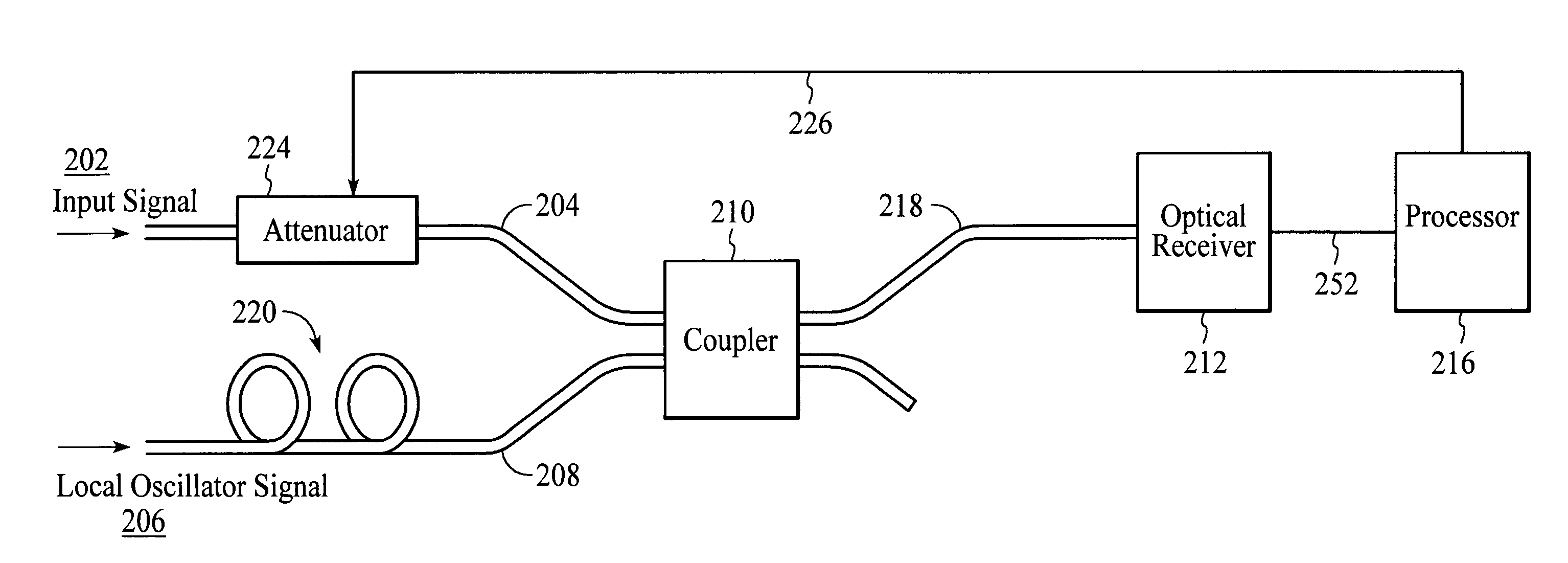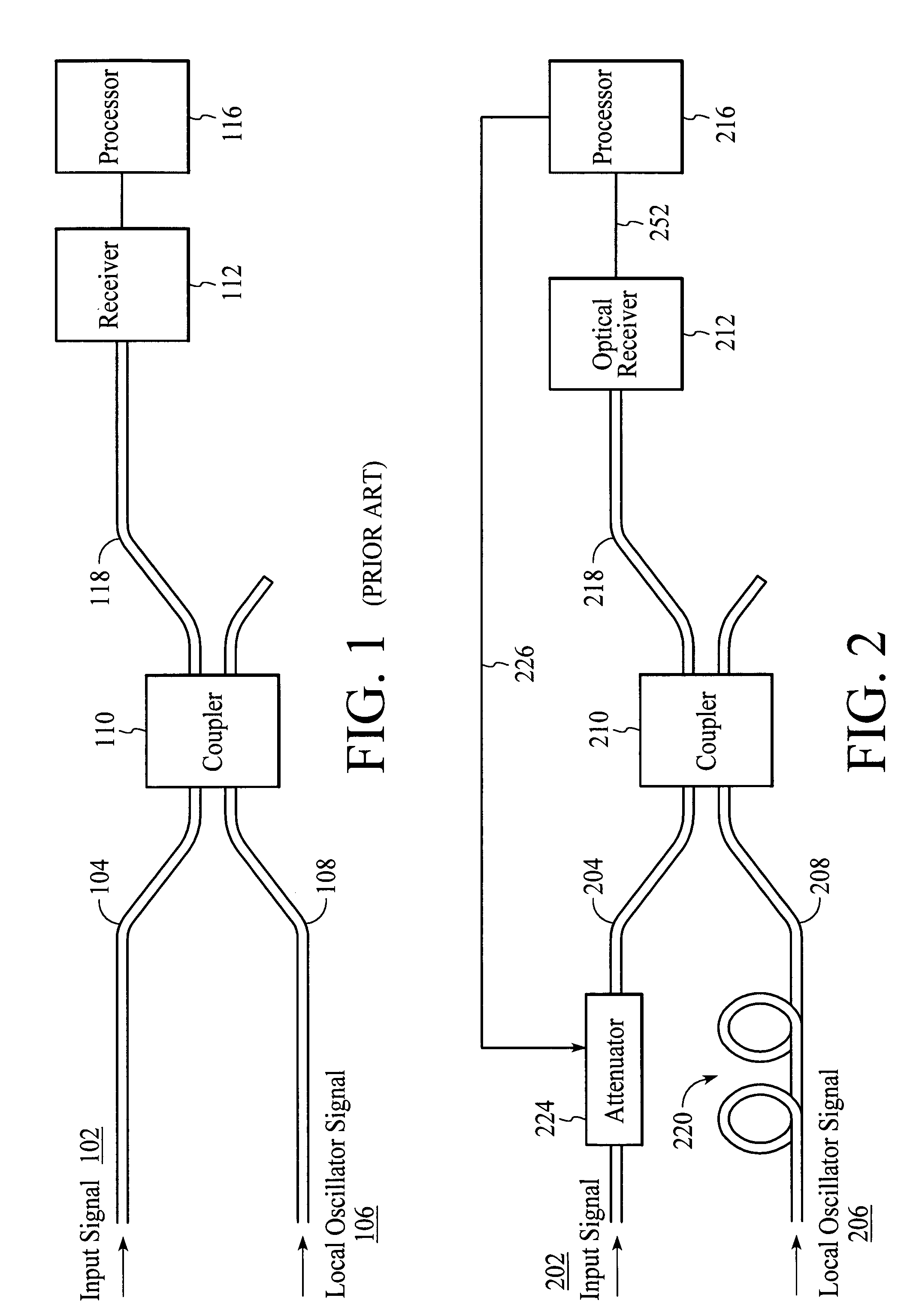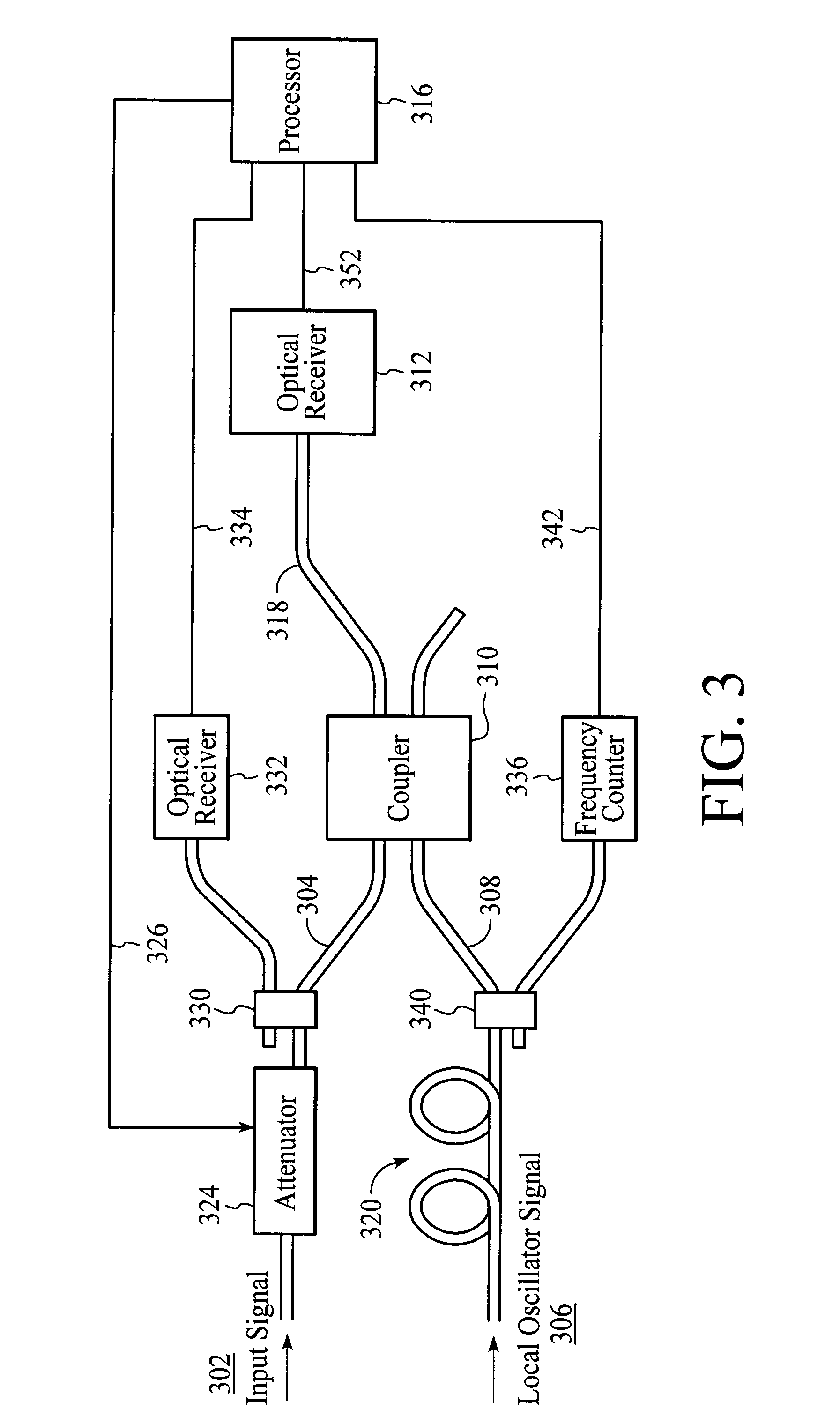Method and system for optical heterodyne detection of an optical signal that utilizes optical attenuation
- Summary
- Abstract
- Description
- Claims
- Application Information
AI Technical Summary
Benefits of technology
Problems solved by technology
Method used
Image
Examples
Embodiment Construction
[0019]An embodiment of the invention involves an optical heterodyne detection system in which an input signal is attenuated before the input signal is combined with a local oscillator signal. The input signal is attenuated in order to improve the signal to noise ratio of the heterodyne signal that is generated when the input signal and the local oscillator signal are combined.
[0020]As is known in the field of optical heterodyne detection, an input signal and local oscillator signal combine to create an optical signal having components that include intensity noise from the input signal, shot noise from the local oscillator signal, and the heterodyne signal. When the intensity noise of the input signal is the dominant noise source, attenuating the input signal before the input signal is combined with the local oscillator signal improves the signal to noise ratio of the heterodyne signal. The signal to noise ratio of the heterodyne signal is improved because the intensity noise of the ...
PUM
 Login to View More
Login to View More Abstract
Description
Claims
Application Information
 Login to View More
Login to View More - R&D
- Intellectual Property
- Life Sciences
- Materials
- Tech Scout
- Unparalleled Data Quality
- Higher Quality Content
- 60% Fewer Hallucinations
Browse by: Latest US Patents, China's latest patents, Technical Efficacy Thesaurus, Application Domain, Technology Topic, Popular Technical Reports.
© 2025 PatSnap. All rights reserved.Legal|Privacy policy|Modern Slavery Act Transparency Statement|Sitemap|About US| Contact US: help@patsnap.com



